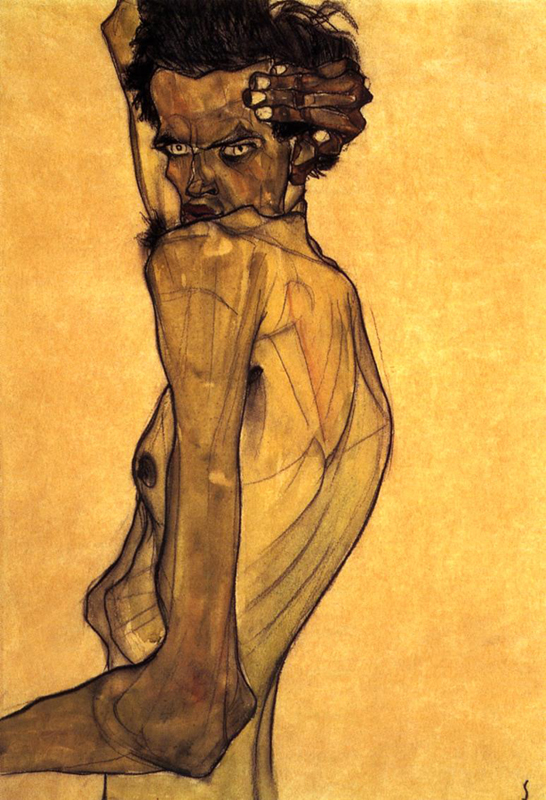1905 – 1925
1. People, places and objects are distorted or exaggerated. Even nature is sometimes distorted. The scenes show a modern world which is hostile and alienating. The sinister feeling is amplified by aggressive and raw brush strokes.

Street, Dresden by Ernst Ludwig Kirchner

The Night (Die Nacht) by Max Beckmann
2. People seem sickly or in emotional pain and anguish. The faces are always gloomy. You never find conventional beauty in Expressionist art!

Cardplaying War-Cripples by Otto Dix

Self-Portrait (Man Twisting Arm Around Head) by Egon Schiele

Death in the Sickroom by Edvard Munch
3. Like Fauvism, colors are unrealistic but Expressionists were not obsessed with red. The unnatural colors are often dark to “express” their feelings about the modern world. Someone once labelled Expressionism as “fauvism with dark glasses.” Edvard Munch’s masterpiece is an example: In his own words he “painted the clouds like real blood.”

The Tower of Blue Horses by Franz Marc
4. Expressionist art is similar to the Symbolist, the scenes are eerie or nightmarish but you can tell them apart: Expressionist perspective, similar to people and objects, is distorted. Also shapes and forms usually lack much detail.

Self-Portrait as a Soldier by Ernst Ludwig Kirchner

Cardinal and Nun by Egon Schiele
2. How Expressionism got its name and what gave rise to it?
3. Why Expressionist artists were rebels?





